2015 Sea-Doo RXP-X 260 Review
One of the most thrilling rides in the PWC industry
Sea-Doo’s RXP-X 260 continues to be one of the most thrilling, most aggressive rides you can buy. And the reasons all come down to a collection of acronyms that aren’t just clever marketing speak, but truly describe some innovative features.
Let’s go through them one by one…and see how they add up.
T3
One of the clunkier terms bandied about is T3, a description of the hull design. According to Sea-Doo, it stands for tight turning t-shape, but what it means to the potential RXP-X owner is that this boat can carve some of the hardest corners ever experienced on a PWC.
The t-shape refers to the hull when viewed from behind. The keel drops much lower than the outer sections of the hull, allowing the hull to run on this reduced surface at higher speeds. But rail the boat into a corner and those outer sections of the hull come into play, with rounded chines that let a driver easily lean the hull over and “roll” into a corner with just an intuitive inside lean.
COMPARISON: Read our review of the 2014 Sea-Doo RXT-X 260
Complementing the hull shape are the sponsons. Rather than simple vertical blades which increasingly lose their effectiveness the more the craft is leaned over, they feature 90-degree winglets that start to grab the water as the traditional sponson surface starts to lose its grip. Sponsons are user-adjustable, meaning you can angle them up for a looser ride, or drop them even lower to increase the tenacity of the boat’s turns.
ErgoLock
The T3 hull should please almost any performance enthusiast, but it’s also just as likely to expose a glaring weakness. Many riders simply don’t have the upper body strength to hang on and push it to its potential. Enter Sea-Doo’s innovate approach to driver ergonomics dubbed ErgoLock.
Sea-Doo’s goal with the design was to transfer much of the strain of hard cornering from the driver’s weaker upper body (traditionally called upon heavily in a hard-cornering machine) to the stronger core and leg muscles, a switch designed to allow riders to push their limits even further while extracting the most out of the craft’s power and handling. They accomplished this feat with the ErgoLock system, a combination of seat, footwell and handlebar design.
The seat is arguably the key component. Unlike many PWC saddles which skew toward the wider end and often work against the leg muscles, the RXP-X seat features a true hourglass profile. Its dramatically thinner midsection is not only more comfortable, but also allows riders to grab the seat with their thighs. Above the thighs, the boat includes generously padded bolsters, which wrap up and partially over the thigh area for a more secure, locked-in feel. Add the canted footwell bolsters, which allow the driver to use their now outwardly angled legs to further brace in the turns, and adjustable handlebars that can be fine tuned in terms of both grip angle and overall handlebar width, and you’ve got a boat that you don’t ride atop, but almost become an integral part of.
COMPARISON: Read our review of the 2014 Kawasaki Jet Ski Ultra 310X
High-Performance VTS
The benefits of trim are obvious. A driver can drop the bow to put more hull in the water when cornering, and raise that bow to lessen the wetted surface for greater top speed. Trim can also be used to compensate for a heavier load, or to soften the blow of rough water.
Sea-Doo’s Variable Trim System (VTS), however, takes the ease of use to another level. It not only responds quickly with just a tap of a handlebar-mounted button, it can store favored settings. That way a rider can save their preferred high-speed running angle, and their favorite cornering position, and then quickly jump between them with just a quick double-tap of the button. Eyes don’t have to come off the water looking for a position display, but can remain focused on the water.
ATR (All That Remains)
While the items above truly distinguish the craft, they’re only just the beginning of what makes it a success. There’s also a potent, 260hp supercharged engine with intercooler to push it easily to the 65 mph mark and beyond, and yank it out of the hole (with an assist from the hull trim tabs) with arm-stretching acceleration. This is the same engine that powers larger models, and in this nimble two-seater it truly shines. The job of taming that power falls to Intelligent Throttle Control (iTC), which lets the user determine how steep that acceleration curve will be en route (or in ECO mode, how much fuel can be saved).
And then there are the initials that we’ve probably all now become familiar with – iBR. Sea-Doo’s Intelligent Brake & Reverse uses a modified reverse bucket to provide actual stopping power out on the water, while changing reverse operation to an intuitive, handlebar-lever controlled operation that keeps eyes focused on the water ahead and not searching for a console lever. Best of all it lets the RXP-X start in neutral at the dock, rather than surge forward or back. I’ll stop short of saying it gives the boat actual gears, but it sure does a good job of mimicking the feel.
COMPARISON: Read our review of the 2014 Yamaha FZR
What’s left? Plenty, but previous reviews tell that tale. The boat hasn’t changed significantly for 2015, although the new radio-frequency D.E.S.S. (Digitally Encoded Security System) key is pretty cool, as is the bright Sunburst Yellow paint option. And yes, no significant changes means a few quirks are still present. Abruptly release the throttle and you’ll find the hull can still sometimes list to its side, requiring a little finesse to break free. And taller riders may still find they have to slide further back in the saddle because of the thigh bolsters.
But all in all, this boat is JATTR…just a thrill to ride. And when it comes to having fun on the water, that may be the only acronym that matters.
| 2015 Sea-Doo RXP-X 260 Review Specs | |
| Length | 130.6 inches |
| Beam | 48.3 inches |
| Dry Weight | 835 lbs |
| Engine | Three-cylinder EFI, Supercharged/Intercooled |
| Displacement | 1,494 cc |
| Bore and Stroke | 100 mm x 63.4 mm |
| Compression Ratio | 8.4:1 |
| Rated Horsepower | NA |
| Fuel Capacity | 15.9 gal. |
| Combined Stowage Capacity | 30.7 gal. |
| Colors | Black/Viper Red; Sunburst Yellow/Hyper Silver |
| Price | $14,799 |
Get PersonalWatercraft.com in your Inbox!
Like PersonalWatercraft.com on Facebook
Comments
Most Popular

2025 Yamaha JetBlaster PRO 2-Up Review

Remembering the Sea-Doo XP

2024 Kawasaki Jet Ski STX 160X Review

2024 Yamaha GP HO Review

2017 Kawasaki Jet Ski Ultra 310LX Review




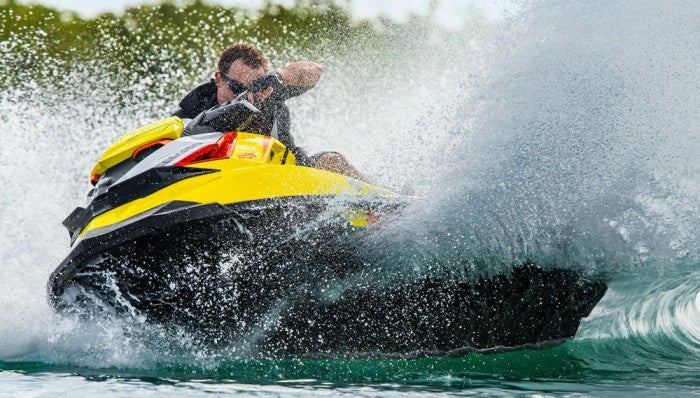
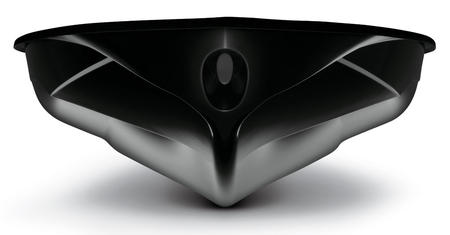
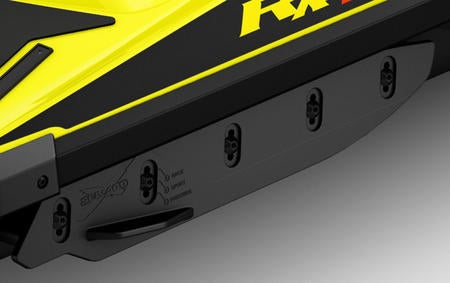
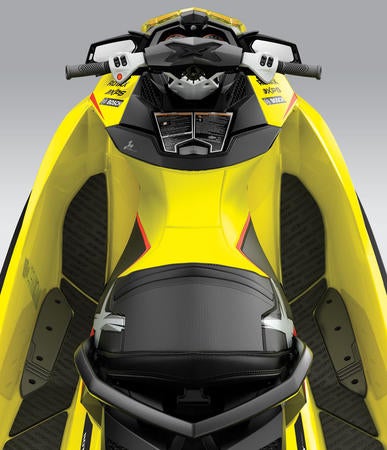
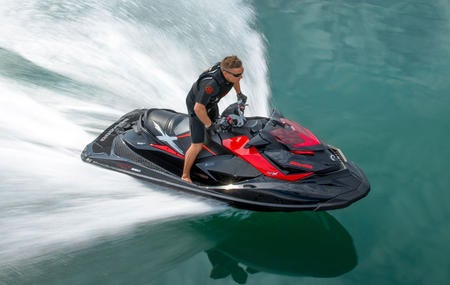
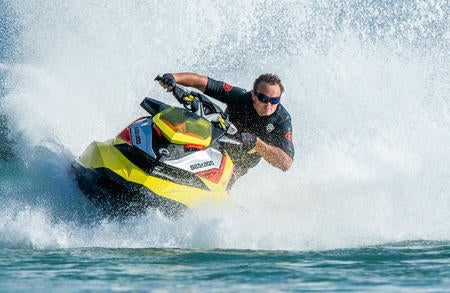
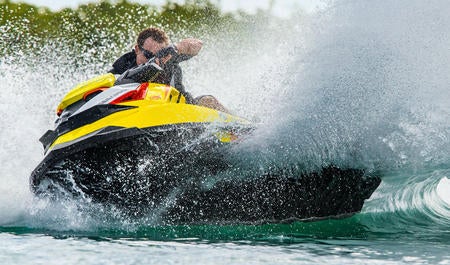








 Your Privacy Choices
Your Privacy Choices